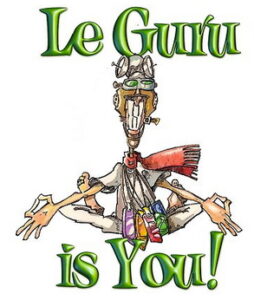 MYTHOLOGIES ARE THE STORIES WE TELL OURSELVES, THE WAY WE MAKE SENSE OF OUR WORLD — They arise from our interpretation of events and experiences interpretations that depend in large part upon our technology. Cultural anthropologist Bruno Latour calls this breeding ground of meaning-making the “anthropological matrix,” and he suggests that nothing birthed by humanity can be neatly divided between nature and culture. Everything in the anthropological matrix “is composed of, hybrids’ -‘speaking things’ that are both natural and cultural, real and imagined, subject and object.
MYTHOLOGIES ARE THE STORIES WE TELL OURSELVES, THE WAY WE MAKE SENSE OF OUR WORLD — They arise from our interpretation of events and experiences interpretations that depend in large part upon our technology. Cultural anthropologist Bruno Latour calls this breeding ground of meaning-making the “anthropological matrix,” and he suggests that nothing birthed by humanity can be neatly divided between nature and culture. Everything in the anthropological matrix “is composed of, hybrids’ -‘speaking things’ that are both natural and cultural, real and imagined, subject and object.
—-
Joseph Campbell, the well-known comparative mythologist, noted the important role technology plays in expanding human consciousness. In speaking of humanity’s journey to the moon and its simultaneous broadcast via television (two extraordinary technological feats), he explained, “The making and the visual broadcasting 6f that trip transformed, deepened, and extended human consciousness to a degree and in a manner that amount to the opening of a new spiritual era.”
What are the characteristics of that era? Campbell again:
“Our mythology now … is to be of infinite space and its light … On our planet itself all dividing horizons have been shattered. We can no longer hold our loves at home and project our aggression elsewhere; for on this spaceship Earth there is no ‘elsewhere’ any more. And no mythology that continues to speak or to teach of ‘elsewheres’ and ‘outsiders’ meets the requirements of this hour.'”
Campbell goes on to point out that within the last century, we’ve gone from having no idea how our planet looked to having a beautiful blue-and-white image firmly fixed upon our mind’s eye. We’ve learned that our own galaxy is one among millions and that we, here on Earth, are but one strand in a complex web of life. Little by little, we are collectively ushering in a new mythos – an era of planetary consciousness.
Planetary consciousness is shorthand for the understanding that everything is interdependent-that our lives and indeed all sentience are engaged in an intimate conversation. The particularities of the conversation sustain the structure of the whole, from the smallest particles to the largest molecule. Our rapidly evolving information and communication technologies serve as an external, physical manifestation of the larger web of life. From laptops to iPads to smart phones, we have created systems that extend our voices, further our reach, and support greater and greater interconnectivity and interdependence. Roy Ascott, a visionary pioneer of cybernetic and telematic art (both computer mediated), suggests that by enabling us to “transfer our thoughts and transcend the limitations of our bodies,” these technologies have given rise to a new faculty, that of”cyberception.”3
Cyberception may provide us with cyber “superpowers,” but it will not enable us to develop higher states of consciousness, anymore than learning to transfer our thoughts and transcend our bodies without the help of the Internet does (for example, through ESP or remote viewing). As a researcher interested in promoting higher stages of consciousness, I have begun to imagine this emergence of cyberception Ascott speaks of as giving rise to an infusion of high moral values-such as compassion, equanimity, generosity, and loving kindness-in our technology, in a process that has been called “transception.”
Which brings us to the cyberhero archetype.
What is a Cyberhero?
The nature of an archetype is to embody an ideal-the cyberhero is no exception. In 2005, when I first suggested the faculty of transception, it was just that, a theoretical construct, but a few years later, I began noticing examples of it online in the form of “digital altruism.” With the realization that millions.of people were engaging in various forms of “digital goodness” (for example, altruism, activism, and e-philanthropy) came the theory that a new incarnation of the hero archetype was emerging-the cyberhero. As a theoretical construct, the cyberhero archetype appeared to represent individuals motivated to act on behalf of other people, animals, and the environment using the Internet and digital technologies in the peaceful service of achieving humanity’s highest ideals and aspirations-world peace, social justice, environmental protection, and planetary stewardship.
After exploring the theoretical underpinnings of the archetype, I designed a questionnaire to explore two premises inherent in the theory:
1) There are people who fit the archetype of the cyberhero.
2) These individuals have a trans-personal sense of identity.
The results from the many respondents support both premises. Below is a summary of the findings:
• 84 percent of the respondents are consciously using the Internet to promote peace in the world
• 74 percent feel a sense of unity with all the other people who are engaging in various forms of digital goodness (e.g., clicking-to-donate or signing on-line petitions)
• 76 percent believe that simple actions such as clicking-to-donate can have a significant impact when a lot ofpeople click each day
• 83 percent feel that the Internet enables them to help others more than they could without it
• 93 percent either “agree” or “strongly agree” that their life is interconnected with all the life forms on our planet
• 93 percent enjoy acting on behalf of people in need regardless of their age, race, ethnicity, religion, or gender
• 86 percent use the Internet to act on behalf of more than one cause or charity
• 8S percent think the needs of other people are as important as their own needs
It’s important to keep in mind that while the data support the premises, this doesn’t mean that everyone using the Internet to help others is a cyberhero, anymore than every mother or father fits the ideal archetypal image of the all-loving mother or father. Individuals who use the Internet solely to benefit their own “in-group” are not cyberheroes, just as someone in the real world would not be considered a hero if he or she limited their heroic activity to an in-group of their own (for example, those of a shared race or religion). The hero ideal, or archetype, has no regard for constructs that place boundaries on virtues or moral values, such as compassion, empathy, and loving-kindness. The cyberhero archetype embodies impartiality to the nth degree, being itself reliant on an interdependent, boundary-less Internet that favors no individual above another (ideally speaking).
Serving Planetary Consciousness
Why does the cyberhero matter? New mythologies require new archetypal forms to support their emergence. The cyberhero speaks on behalf of planetary consciousness, providing the hero within each of us the means to act on behalf of other people, animals, and the environment with astonishing ease. While it’s true that platforms must be designed to support this activity, this mutual dependency can be understood as a catalyst facilitating change at every level of human organization (in family, community, business, and so on).
In the past, we have been content with information and communication technologies that extend our voices, our eyes, our ears, but we have entered an era in which we need, perhaps more than anything, a method of extending our compassion. Most of the crises we are facing in the world today are due to a lack of higher-level moral values. Moral values are not static; they evolve as human consciousness evolves (in tandem with our technology). We see this, for example, in the history of slavery, which was condoned around the world until technology and consciousness evolved such that it eventually became an abomination. Today, we can witness the continued evolution of moral values in the adoption of the Declaration of Human Rights, the Earth Charter, and the slow but sure extension of compassionate concern to animals, as in California’s Proposition 2, the “Prevention of Farm Animal Cruelty Act.”
Although we have a long way to go, these examples suggest that we are indeed evolving, and as we do, our moral values are becoming more encompassing, representing higher stages of consciousness. The cyberhero is a change agent, an ideal embodiment of our emerging faculty of transception, and speaks of the human embodiment of science and spirit, technology, and dharma. Set on the horizon of humanity’s mythic imagination, the cyberhero brings together the best qualities of the hero and a sprinkling of cyberpowers. In so doing, the archetype serves as a harbinger of human potential and as a channel for planetary consciousness.
Excerpts from the Noetic Post by Dana Klisanin



